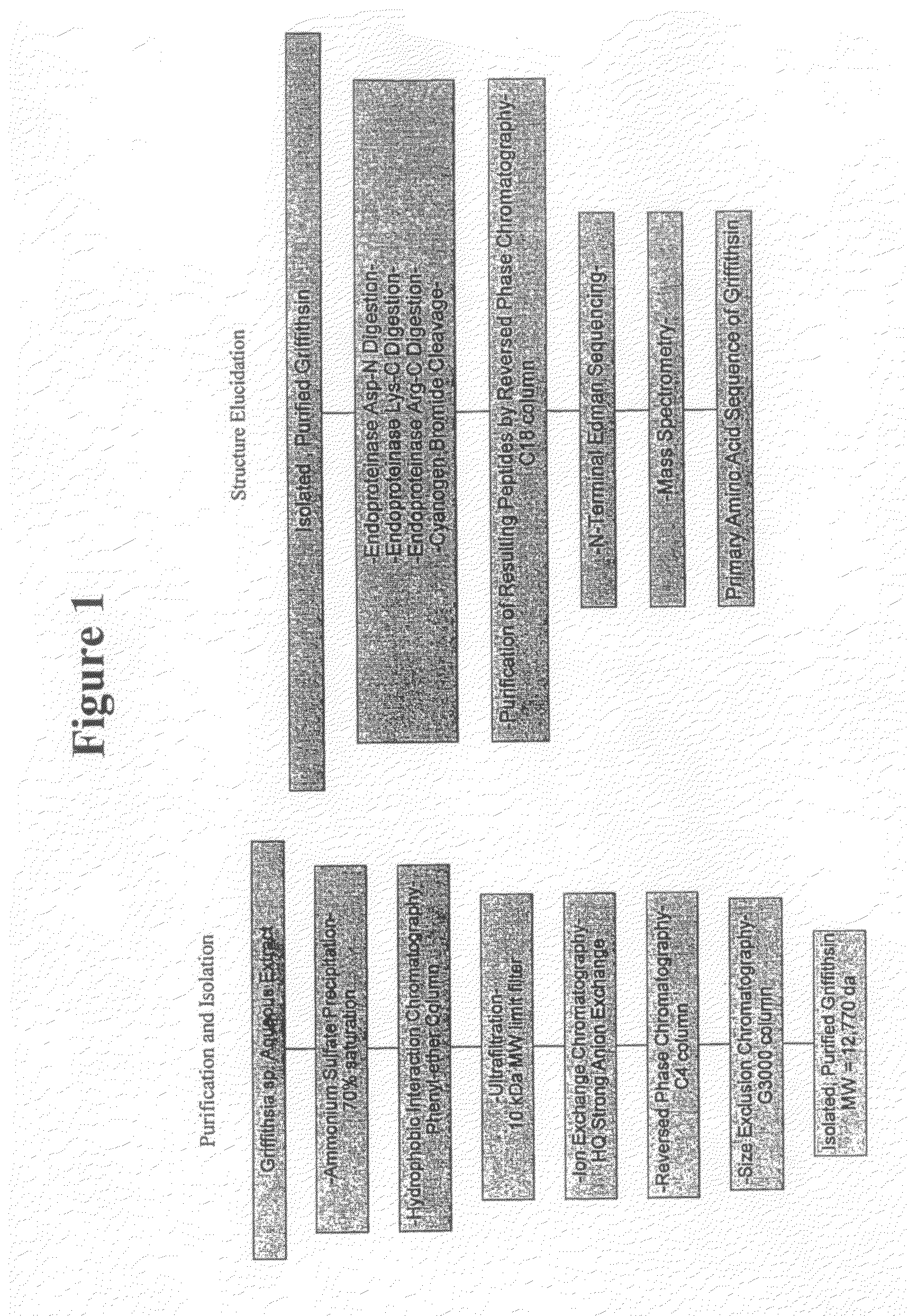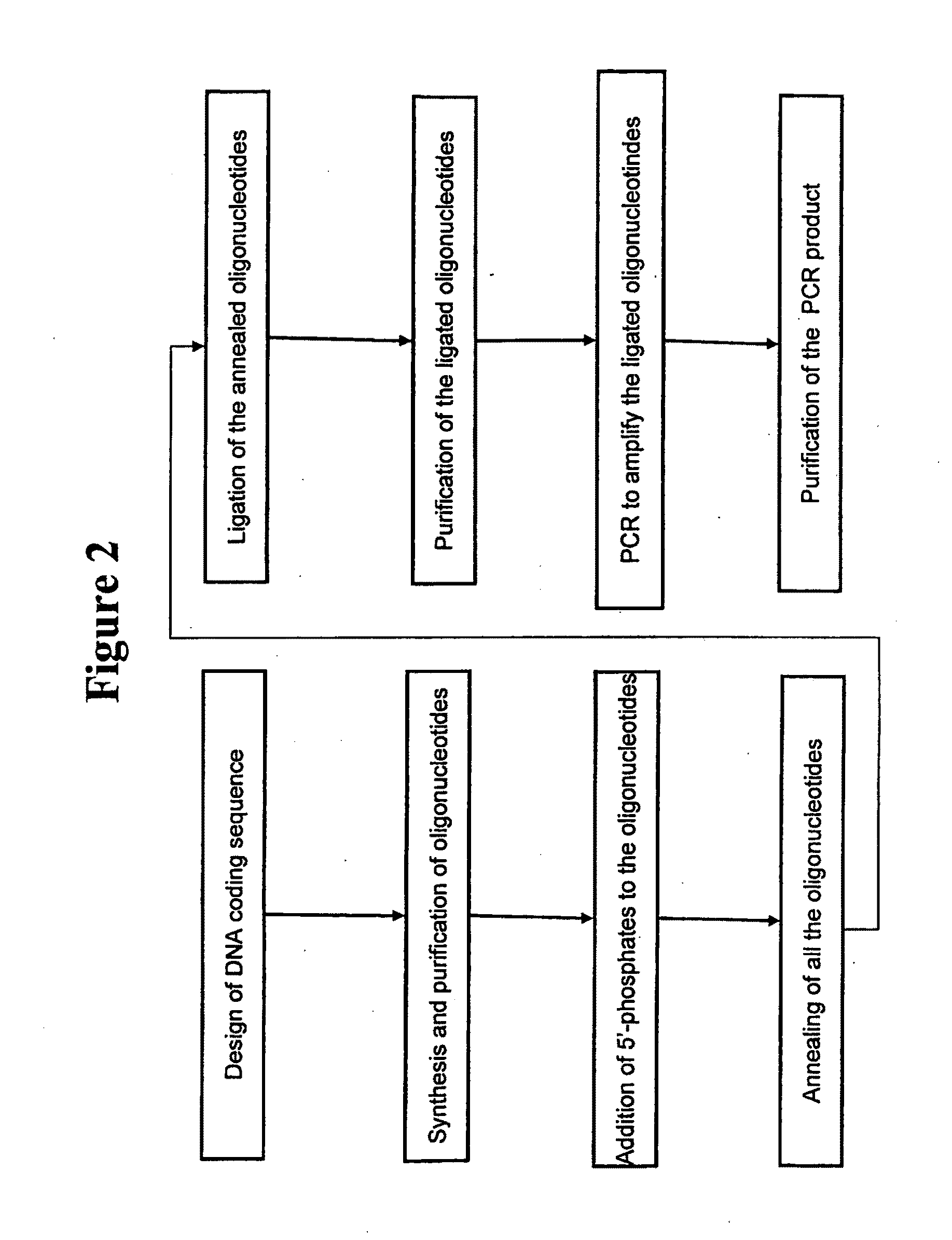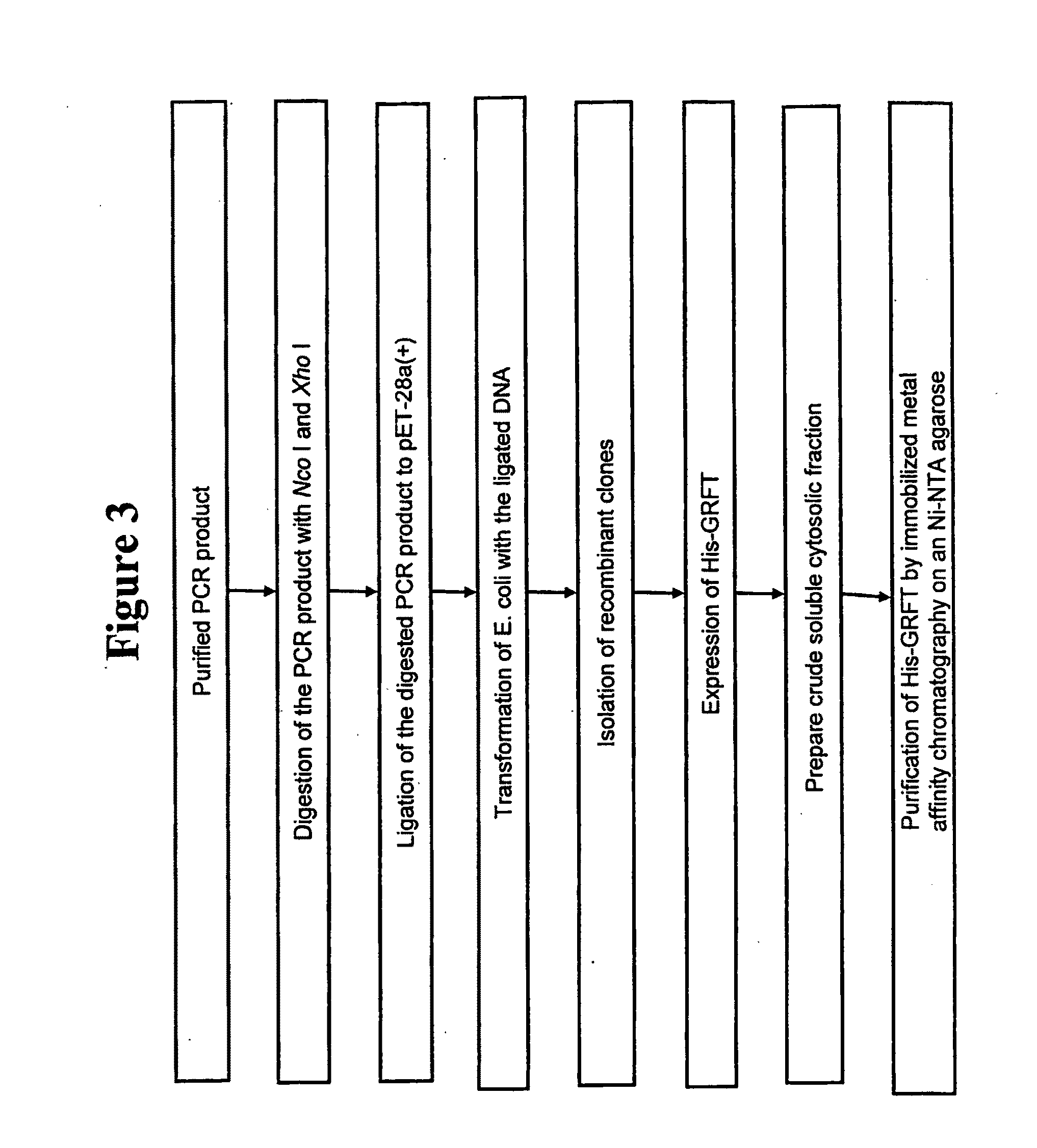Griffithsin, glycosylation-resistant griffithsin, and related conjugates, compositions, nucleic acids, vectors, host cells, methods of production and methods of use
a glycosylation-resistant, antiviral technology, applied in the direction of depsipeptides, peptide/protein ingredients, peptide/protein components, etc., can solve the problems of infection of people, no effective preventative or therapeutic vaccine has been identified so far, and limited use of azt and related compounds, etc., to inhibit the infection of the mammal
- Summary
- Abstract
- Description
- Claims
- Application Information
AI Technical Summary
Benefits of technology
Problems solved by technology
Method used
Image
Examples
example 1
[0134]This example illustrates a method of isolating and purifying griffithsin from Griffithsin sp. and elucidating the griffithsin amino acid sequence.
[0135]Anti-HIV bioassay guided fractionation was used to track the isolation of the griffithsin polypeptide. In brief, the cellular mass from Griffithsia sp. was harvested by filtration, freeze-dried, and extracted first with H2O followed by (1:1) MeOH—CH2Cl2. Individual aliquots of the organic and aqueous extracts were tested for cytoprotective properties in the NCl primary anti-HIV screen (Weislow et al. J. Natl. Cancer Inst., 81: 577-586 (1989)). Only the H2O extract showed anti-HIV activity.
[0136]A freeze-dried aqueous extract (10 g) was brought to a concentration of 50 mg / ml by addition of DDH2O and maintained on ice. Crystalline ammonium sulfate (Sigma, St. Louis, Mo.; molecular biology grade) was added to the solution such that the final concentration of the mixture was 75% saturation. The mixture was allowed to precipitate on...
example 2
[0140]This example demonstrates the synthesis of griffithsin genes. The methods described herein are illustrated in FIG. 2.
[0141]The chemically deduced amino acid sequence of griffithsin was back-translated to elucidate the corresponding DNA coding sequence. Since amino acid residue 31 of native griffithsin did not appear to be one of the twenty common amino acids, alanine was substituted in this position (SEQ ID NO: 2). In order to facilitate initial production and purification of recombinant griffithsin, a commercial expression vector pET-26b(+), from Novagen, Inc., Madison, Wis., for which reagents were available for affinity purification and detection, was selected. Appropriate restriction sites for ligation to pET-26b(+), and a stop codon, were included in the DNA sequence. SEQ ID NO: 1 is an example of a DNA sequence encoding a synthetic griffithsin gene. A flowchart illustrating a method of synthesizing of a griffithsin gene is shown in FIG. 2.
[0142]A griffithsin-encoding DNA...
example 3
[0146]This example demonstrates the expression of an N-terminal His-tagged-griffithsin gene.
[0147]A recombinant griffithsin protein and a C-terminal, His-tagged griffithsin protein encoded by the nucleic acids of Example 2 did not efficiently translocate to the periplasmic fraction of E. coli following protein expression. In addition, the majority of the produced proteins accumulated in the inclusion bodies of E. coli without the cleavage of a pelB signal sequence located at the N-terminus of the griffithsin protein. Thus, steps were taken to express griffithsin in the cytosolic fraction of E. coli.
[0148]The pET-26b(+)-griffithsin DNA construct was used as a template PCR using a pair of appropriate primers. The PCR product was designed to have a “penta-His” peptide and thrombin recognition site at the N-terminal end of the griffithsin polypeptide, providing for production of a N-terminal, His-tagged-griffithsin fusion protein. The PCR reaction product was purified from an agarose g...
PUM
| Property | Measurement | Unit |
|---|---|---|
| concentration | aaaaa | aaaaa |
| flow rate | aaaaa | aaaaa |
| weight | aaaaa | aaaaa |
Abstract
Description
Claims
Application Information
 Login to View More
Login to View More - R&D
- Intellectual Property
- Life Sciences
- Materials
- Tech Scout
- Unparalleled Data Quality
- Higher Quality Content
- 60% Fewer Hallucinations
Browse by: Latest US Patents, China's latest patents, Technical Efficacy Thesaurus, Application Domain, Technology Topic, Popular Technical Reports.
© 2025 PatSnap. All rights reserved.Legal|Privacy policy|Modern Slavery Act Transparency Statement|Sitemap|About US| Contact US: help@patsnap.com



